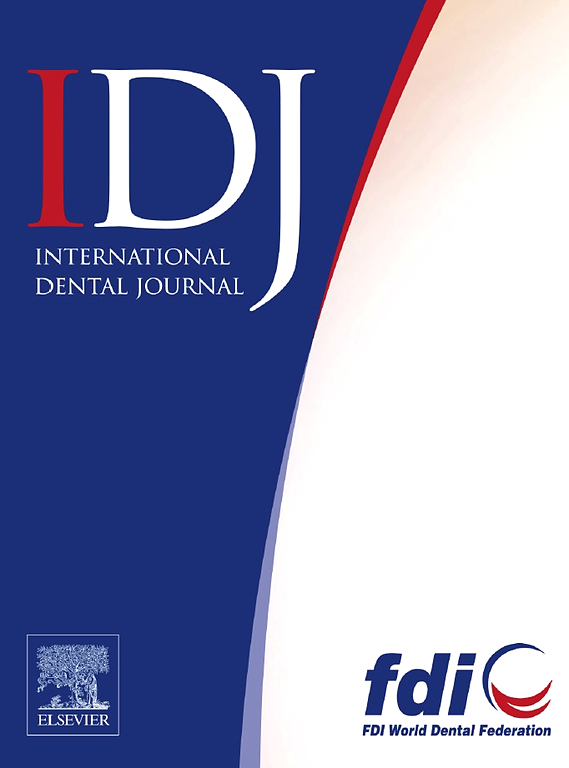From Cockle Shell to Bioceramic Root Canal Sealer: The Manufacturing and its Physical and Biological Properties
IF 3.7
3区 医学
Q1 DENTISTRY, ORAL SURGERY & MEDICINE
引用次数: 0
Abstract
Introduction and aims
Cockle shells, which are discarded as waste by the food industry, have been used in medical fields. This study aimed to manufacture a newly developed cockle shell-derived bioceramic sealer (NDBS) and evaluate its physical and biological properties.
Methods
Cockle shell-derived tricalcium silicate (C-C3S) was synthesized via the solid-state reaction technique and analysed for chemical composition and particle size. NDBS was prepared by mixing C-C3S with specific additives. The chemical composition and surface morphology of fully set sealers were assessed using X-ray diffraction, Fourier-transform infrared spectroscopy, and scanning electron microscopy. Physical properties were tested according to International Organization for Standardization 6876 standards. For biological testing, both sealers were extracted and diluted for cytotoxicity and proliferation assays on human periodontal ligament cells using the MTT assay. Reverse transcription-quantitative polymerase chain reaction was performed to evaluate changes in proinflammatory (interleukin-6, interleukin-8, tumour necrosis factor-alpha-α) and mineralization (alkaline phosphatase) gene expression.
Results
C-C3S was found to contain 55% tricalcium silicate with a particle size of 5.32 microns. Both fully set sealers contained tricalcium silicate and calcium silicate hydrate. They demonstrated acceptable flowability, setting time, film thickness, and radiopacity, although their solubility exceeded International Organization for Standardization limits. Both sealers maintained a pH above 7, with no significant difference in calcium release after 2 weeks. The MTT assay indicated improved cell viability with increasing dilution. Reverse transcription-quantitative polymerase chain reaction showed that both sealers showed a tendency to reduce proinflammatory gene expression. Both sealers showed a tendency to upregulate alkaline phosphatase gene expression.
Conclusion
Within the limitations of this study, it was shown that cockle shells can be used to manufacture NDBS, which demonstrated physical and biological properties comparable to those of iRoot SP.
Clinical relevance
This study highlights the potential of NDBS to be further developed as a root canal sealer.
从蛤壳到生物陶瓷根管密封剂:制造及其物理和生物性能
前言与目的被食品工业丢弃的贝壳被用于医疗领域。本研究旨在制备一种新开发的鸟蛤壳源生物陶瓷密封剂(NDBS),并对其物理和生物性能进行评价。方法采用固相反应法制备了贝壳型硅酸三钙(C-C3S),并对其化学成分和粒径进行了分析。将C-C3S与特定添加剂混合制备NDBS。利用x射线衍射、傅里叶变换红外光谱和扫描电子显微镜对完整封口剂的化学成分和表面形貌进行了评估。根据国际标准化组织6876标准测试了物理性能。为了进行生物学测试,提取并稀释两种密封剂,使用MTT法对人牙周韧带细胞进行细胞毒性和增殖试验。采用逆转录-定量聚合酶链反应评价促炎(白细胞介素-6、白细胞介素-8、肿瘤坏死因子-α -α)和矿化(碱性磷酸酶)基因表达的变化。结果c - c3s的硅酸三钙含量为55%,粒径为5.32 μ m。两种完全密封剂都含有硅酸三钙和水合硅酸钙。虽然溶解度超过了国际标准化组织的限制,但它们的流动性、凝固时间、膜厚和不透光性都是可以接受的。两种封口剂的pH值均维持在7以上,2周后钙释放量无显著差异。MTT试验表明,随着稀释度的增加,细胞活力有所提高。逆转录-定量聚合酶链反应显示,两种封口剂均有降低促炎基因表达的趋势。两种海豹均表现出上调碱性磷酸酶基因表达的趋势。结论在本研究的局限性内,研究表明鸟蛤壳可以用于制造NDBS,其物理和生物学特性与iRoot sp相当。临床相关性本研究强调了NDBS作为根管密封剂的进一步开发潜力。
本文章由计算机程序翻译,如有差异,请以英文原文为准。
求助全文
约1分钟内获得全文
求助全文
来源期刊

International dental journal
医学-牙科与口腔外科
CiteScore
4.80
自引率
6.10%
发文量
159
审稿时长
63 days
期刊介绍:
The International Dental Journal features peer-reviewed, scientific articles relevant to international oral health issues, as well as practical, informative articles aimed at clinicians.
 求助内容:
求助内容: 应助结果提醒方式:
应助结果提醒方式:


